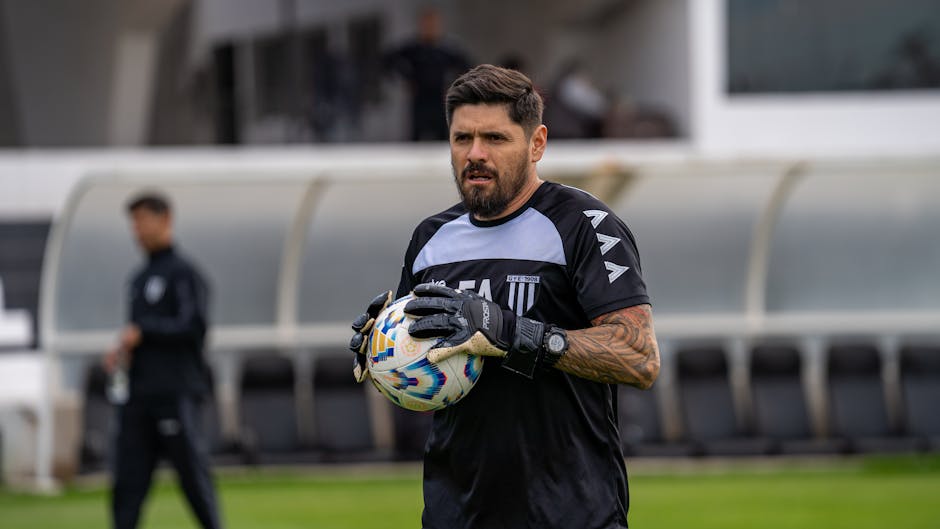The Complete Guide to Fit Essay Tips Guide
In the vast landscape of fitness, sharing knowledge, insights, and experiences is just as crucial as the workouts themselves. Whether you’re a fitness professional, an aspiring personal trainer, a health enthusiast, or a student diving into sports science, the ability to articulate your thoughts through a “fit essay” is an invaluable skill. But what exactly makes an essay “fit” in the context of fitness? It’s not just about the topic; it’s about precision, strength, clarity, and impact – much like a well-executed exercise routine.


This comprehensive guide is designed to equip you with all the essential tips and strategies to craft essays that are not only academically sound but also deeply resonate with your audience, driving home your message with power and persuasion. From choosing your topic to the final polish, we’ll walk you through every step to ensure your fitness essays are as robust and well-defined as your fitness goals. Get ready to sculpt your writing muscles and elevate your voice in the health and wellness world!
Why a “Fit Essay” Matters in the Fitness Niche
In a world saturated with information, distinguishing credible, well-researched content from fleeting trends is paramount. A “fit essay” in the fitness niche serves several critical purposes:
- Establishes Credibility: Demonstrates your expertise and understanding of complex fitness concepts, from exercise physiology to nutrition science.
- Educates and Informs: Breaks down intricate topics into digestible, understandable language, helping readers make informed decisions about their health.
- Challenges Misinformation: Provides evidence-based arguments to counteract myths and fads prevalent in the fitness industry.
- Inspires and Motivates: A well-written piece can ignite passion, encourage healthy habits, and empower individuals on their fitness journeys.
- Showcases E-E-A-T (Experience, Expertise, Authoritativeness, Trustworthiness): For both Google and your readers, a high-quality essay is a clear signal that you know your stuff, have practical experience, and are a reliable source of information.
By following these fit essay tips, you’re not just writing; you’re contributing meaningfully to the health and wellness conversation.
Phase 1: Building a Strong Foundation – Research and Planning
Just as a successful fitness program begins with a solid assessment, a strong essay starts with meticulous planning and thorough research. This foundational phase is crucial for ensuring your arguments are well-supported and your essay stands on firm ground.
Choosing Your Topic and Niche Down
Even if you’re given a broad topic like “the benefits of exercise,” you need to narrow it down. A “fit essay” doesn’t try to cover everything; it focuses on a specific aspect deeply. Consider:
- Your Passion: What aspect of fitness truly excites you? Your enthusiasm will shine through your writing.
- Audience Relevance: Who are you writing for? A general audience, fitness professionals, or beginners? Tailor your topic to their interests and knowledge level.
- Current Debates/Trends: Is there a hot topic in fitness you can shed new light on? For example, “The Efficacy of High-Intensity Interval Training (HIIT) for Cardiovascular Health in Sedentary Adults” is much more focused than just “HIIT.”
- Availability of Research: Ensure there’s enough credible information to support your claims.
Conducting Thorough and Credible Research
This is where your essay gains its muscle. In the fitness world, misinformation can be rampant. Your job is to be a beacon of truth. Focus on:
- Peer-Reviewed Journals: Look for studies published in reputable scientific and medical journals (e.g., ACSM journals, Journal of Applied Physiology).
- Authoritative Organizations: Rely on information from organizations like the National Institutes of Health (NIH), World Health Organization (WHO), or national sports medicine associations.
- Certified Professionals: Quote or reference insights from certified personal trainers, registered dietitians, or licensed physical therapists.
- Primary vs. Secondary Sources: Prioritize primary research (original studies) over secondary sources (articles summarizing studies) when possible.
Remember, your goal is to present evidence-based fitness information. Always question the source and look for biases.
Phase 2: Sculpting Your Structure – The Essay’s Blueprint
A “fit essay” has a clear, logical structure that guides the reader seamlessly from introduction to conclusion. Think of it as a well-designed workout program: each section has a purpose, building upon the last to achieve a powerful overall effect.
Crafting a Powerful Thesis Statement
Your thesis is the core of your essay – your main argument or the central point you want to prove. It should be:
- Clear and Concise: One or two sentences, stating your position unequivocally.
- Debatable/Provable: Something that can be argued for or against, and supported with evidence.
- Specific: Avoid vague statements. For example, instead of “Exercise is good,” try “Regular resistance training significantly improves bone density and reduces the risk of osteoporosis in post-menopausal women.”
Place your thesis prominently in your introduction.
Developing a Coherent Outline
An outline is your essay’s skeleton. It ensures logical flow and prevents you from rambling. A typical structure includes:
- Introduction: Hook, background information, thesis statement.
- Body Paragraphs (3-5+): Each paragraph focuses on a single main idea that supports your thesis.
- Topic Sentence: Introduces the paragraph’s main point.
- Evidence/Examples: Data, studies, expert opinions, anecdotes.
- Explanation/Analysis: How does the evidence support your topic sentence and thesis?
- Concluding Sentence: Transitions to the next paragraph.
- Conclusion: Restate thesis (in new words), summarize main points, offer final thoughts/implications, call to action (if appropriate).
This systematic approach ensures your essay builds a strong case for your argument, much like a well-planned workout routine.
Phase 3: Crafting Compelling Content – The Muscle of Your Essay
Now that you have your research and structure, it’s time to fill your essay with engaging and persuasive content. This is where your voice, clarity, and analytical skills come into play.
Engaging Language and Tone
- Be Clear and Concise: Avoid jargon where possible, or explain it simply if necessary. Your audience might not be experts in nutrition science.
- Vary Sentence Structure: Keep your writing dynamic and prevent monotony.
- Use Active Voice: Makes your writing more direct and powerful. “The research showed…” is better than “It was shown by the research…”
- Maintain an Objective Tone: While you have a stance, present information fairly and avoid overly emotional language unless it’s a personal narrative within a specific section.
Integrating Evidence Seamlessly
Don’t just drop statistics or quotes into your essay. Integrate them smoothly and explain their relevance:
- Introduce the Evidence: Provide context for the data or quote.
- Present the Evidence: Cite your source correctly (e.g
